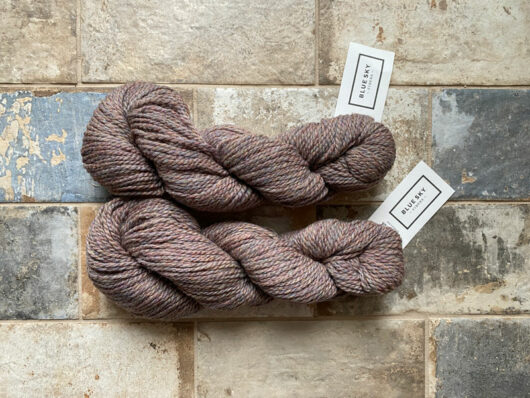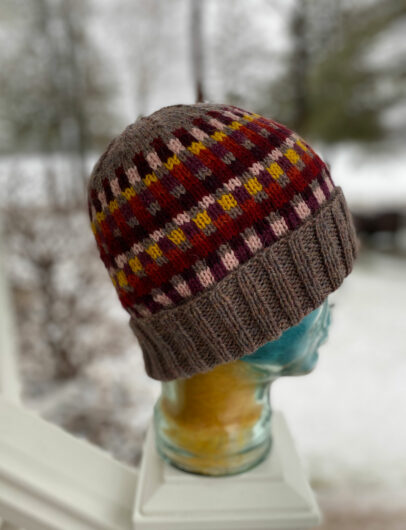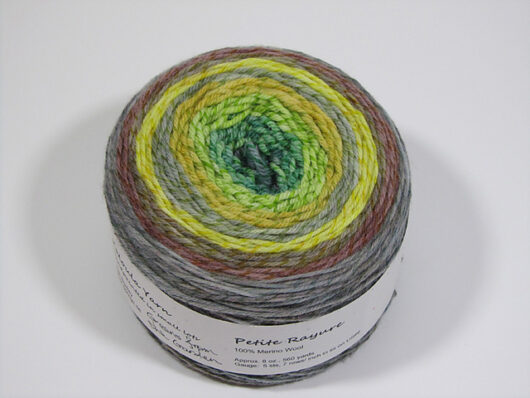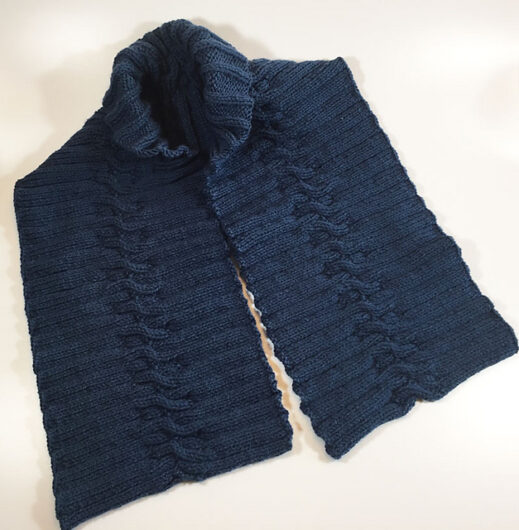I probably shouldn’t admit this in such good company, but I never bought a mini-skein before though I’ve been tempted. The thought of winding all those cuties into something I could knit with was daunting. And anyway I’ve never been sure what I’d knit.
But this Blue Sky Woolstok worsted weight bundle was on sale at a wonderful online shop. And they recommended a cowl pattern to knit with my bundle. Well, or so I thought. I succumbed.
I read through the pattern and that’s when I saw that I was supposed to also buy a full skein of Blue Sky Woolstok at a dainty 123 yards but a not-so-dainty price. And the cowl was pretty tight on yardage for one skein so I really needed to buy two skeins to be safe. Now my sale price was feeling a little shaky. But in for a penny in for a pound.
My first task was turning those bundles into balls or cakes I could knit from. There were two mini-skeins of each colorway. Curses. Double the trouble. How do knitters handle this? Because I tried everything and nothing was very satisfactory.
On my first few attempts I put a mini on my swift. My swift expanded to a cramped 12 inches or so and then I wound the minis into pitiful looking cakes using my winder. Geez, this is going to take longer than it will take to knit the cowl. Next, I opened up three minis and placed each one at a different height on my swift. If you think about how many hands a person has, you will see my predicament. Even when I pressed my mouth into service, loading that trio onto the swift was quite a task. Winding three minis in quick succession sort of worked to speed up the process. But no way was I going to keep that up.
My next try was to unroll the mini and hook the tiny skein around my two feet. I wound a ball using my feet to hold the tension. That worked fairly well until I got a little too enthusiastic and one foot slipped out. Finally? Finally I unwound a mini and laid all the yarn out on my bed. And then I just hand-wound a ball. That worked best. Whoever dreamed up minis should get a marketing prize and then a lump of coal for their birthday.
I dutifully charged into the recommended mosaic/slip stitch cowl. With my vast mosaic dishcloth experience, ahem, I figured I should be sure to match up high contrast colors. Oh my. I got halfway through the cowl and decided it looked like a 1960’s hippie monstrosity. It was probably that gold shade that was fouling the creation. My placement of the pink shade didn’t help.
Time to start over. What to do with these bundles, plus my 246 yards of Woolstok in the beautiful Northern Lights colorway?
Scrappy hats turned out to be just the ticket.
I am totally satisfied with Theresa Schabes A Fairly Scrappy Hat. It’s actually gathered quite a few Ravelry “favs” since I knit it back in late March when Hillman Michigan’s Long Lake was still a snowy place.
Seventy-six grams of yarn, lots of ends that I mostly wove in as the knitting progressed, and a well-behaved crown decreases. Great hat!
Next up was Justyna Lorkowska’s Scrappy Ski Hat. I’ve knit this freebie before in 2-color versions, here and here and here. And I know I shouldn’t insult Woolstok minis by calling them scraps. But gosh I like how treating them as scraps turned out.
Excellent how the crown decreases work out when you continue the colorwork.
I still have about half a skein of the main color Woolstok and assorted oddments of minis. There’s likely enough for another hat!
The next “read the fine print lesson” is a little more nuanced. This is Rainbow Indigo Fisherman Beanie, a DK weight freebie designed by Janet Stimson. Obviously, my version is light on the rainbow. Actually, even the blue denim shaded original is merely aspirational on the rainbow.
Such an excellent classic beanie. So, what does this have to do with reading the fine print? The pattern says a knitter will need 220 yards of DK weight to knit this hat. My two balls of Classic Elite Song totalled 220 yards. I’m good to go. Well, no.
My completed hat, with its rusty red Classic Elite Song bullseye, weighs 98 grams. What happened? She-who-does-not-enjoy-being-called-out-in-public forgot to weigh the balls before starting out on the hat. That’s something that should be done whenever your yardage is as close as mine was to what the pattern called for. At least I had a bit more Song in my stash to complete my one-of-a-kind hat in the same yarn.
I will definitely knit Stimson’s pattern again sometime. Lesson learned on not trusting that a skein of yarn is going to contain at least the yardage the ballband indicates.























